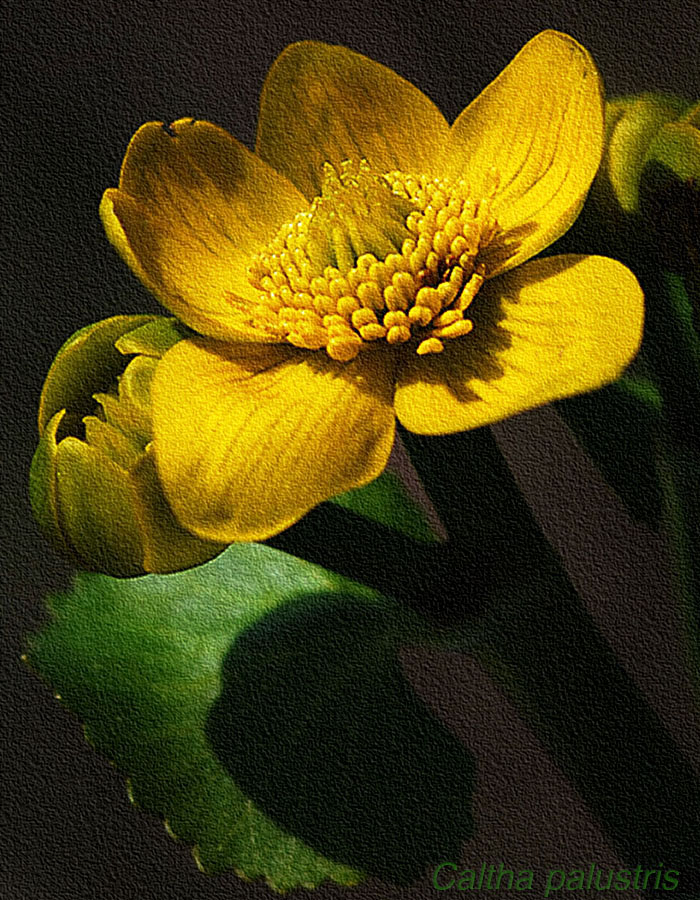
Click image to see Caltha species page
Ranunculaceae (the crowfoot or buttercup family) is one of the largest families in the plant kingdom, with more than 50 genera and approximately 2000 species world wide. The FNA lists 23 Genera for the U.S. The plant features in this family are considered primitive; that is they display characteristics found in the earliest flowering plants (e.g. the apopetalous Eudicots). Gray's Manual of Botany 8th Ed.(p.642) describes the family traits, in part, as follows:
Poison. Used in the biological sense, poisonous is a broad term describing everything from minor irritants to lethal poisons. Substances called poisons can be quite deadly at one concentration and harmless or even medicinal at another. All of the members of this family contain one or more substances that can be referred to as poison (e.g. protoanemonin). According to the Botanical Dermatology Database website, The most common adverse effect reported for these plants is a severe skin irritation and ulceration following application of crushed plant material to the skin. However, some members of the Rununculaceae family contain the dangerous neurotoxin aconitine. The ornamental plants Monkshood (genus Aconitum) and Larkspur (genus Delphinium) are two such plants.
Fruit structure. Gray's manual (see above) divides nineteen genera into two categories based on fruit type:
The Flora of North America (FNA) gives a more complete description of the family characteristics. FNA estimates that the family includes 60 genera and 1700 species worldwide and their U.S. coverage reports on 22 genera and 284 species.
The Biota of North America Program (BONAP) shows the distribution of 26 genera in the U.S.
In The Vascular Plants of Iowa (1994) Eilers and Roosa report 17 genera providing 44 species in Iowa.
Aconitum (1 species)
Actaea (2 species)
Anemone (5 species)
Aquilegia (1 species)
Caltha (1 species)
Clematis (3 species)
Consolida (1 species) [alien]
Delphinium (3 species)
Hepatica (1 species, 2 varieties)
Hydrastis (1 species)
Isopyrum/Enemium (1 species)
Myosurus (1 species)
Pulsatilla (1 species)
Ranunculus (16 species)
Thalictrum (4 species)